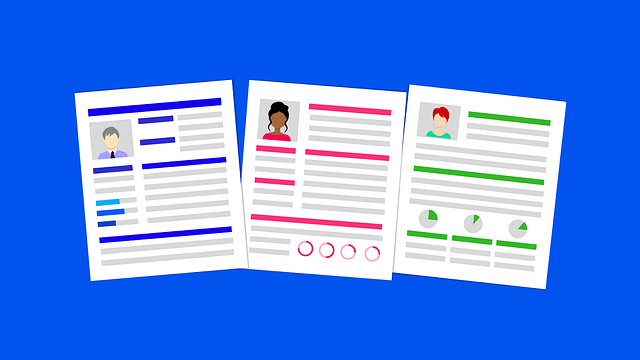Are you tired of getting passed over for the perfect job time and time again? Do you feel like you should be getting a lot more job interviews than you actually are? It can be an incredibly frustrating and disheartening experience to search for a new job, especially if you’re not getting the kind of quick responses you had been hoping for. There’s no denying the fact that most industries are quite competitive, and you’ll be up against other qualified individuals, but even with that in mind, you still should be getting some sort of positive response from your resume.
At this point, it may be a good idea to use a critical eye and examine your resume. Is it hitting the mark and resonating with potential employers? Could it maybe benefit from a few tweaks? Sometimes, updating your resume is all it takes in order to get noticed and land those all-important job interviews. But what exactly should you do to tweak it? What changes should you make?
Let’s take a look at some of the smartest ways to make your resume stand out and help you to get the leg up on the competition. You may not need to use all of these tips; it may only take a couple for you to get a response.
Your Resume Should be Tweaked for Each Job Posting
If you’re like many other people, you have a resume all ready to go, and it’s one that you can send out to any employer when applying for a job. The problem with this approach is that it’s generic, and it will most definitely read generic to the person looking it over. It’s a good way for your resume to be overlooked or forgotten about.

Instead, each time you send a resume, tweak it in a small way so that it fits with a particular industry, job, or skills that the employer is looking for. That could mean changing the order of some details on the resume, highlighting specific skills and experience, or even taking out information that won’t be of benefit.
Read the Job Posting Carefully
Because you are trying to prove you are right for a specific job, it’s important you understand what the job is and what it requires of you. Are there specific skills, qualifications, experience, training, or personality traits they are looking for? There is nothing to stop you from applying for jobs even if you don’t have every single item, but you need to show why you should be considered. This involves getting into the head of the hiring manager and really thinking about what and who it is they are looking for.
Make Sure Your Resume is Short and Concise
Another tip is to make sure your resume is short and concise. No one has time to read through pages and pages of information. Ideally, you want to get it down to two pages maximum, as this should be enough to highlight the most important details without overloading the HR representative or hiring staff.
The Layout Should Be Clean and Uncluttered
This goes hand in hand with keeping your resume short and concise. It should also feature a clean and uncluttered layout that isn’t busy looking. Be mindful of the font you choose too, as you are trying to set a very professional impression. This isn’t the time to start experimenting with artsy fonts and layouts in the hope that it makes you stand out. In reality, it may cause the exact opposite to happen.
In terms of the best font size and style, most experts suggest 12 for the size, and the style could be Times New Roman, Georgia, Helvetica, or Calibri. These are all standard, easy to read and come off as professional.
In order to create different sections of the resumes, you’ll need to use headers. Make sure the font style and size you choose for the header text is consistent throughout.
Schooling and Credentials Need to Be Clearly Displayed
If you have any sort of degree or credentials, this should be very prominent on your resume – as this factor alone can help you to stand out. This is especially the case if you possess more than just a typical degree, or you have a specialized degree. These are rarer and can certainly make a potential employer stop and take notice. Suddenly, instead of being lost in a sea of resumes, yours will rise to the top. For example, two degrees gained in two years is certainly something that will stand out. You can check this link to learn how to embark on a two-degree program if this is something you feel you can benefit from. Your schooling and credentials should never be buried in a resume. In other words, it needs to display prominence, be on the first page, and be easy to locate.
The Resume Should be Free of Mistakes and Errors
Of course, you want your resume to look perfect, as this is the first impression you are making on a potential employer. That means making sure there are no grammatical or spelling errors. Rather than relying on your own eye or spellcheck, it’s a good idea to have a friend or family member read it over. They may spot errors you didn’t catch, and may even have some input on the flow and how the resume reads.
Start the Resume with Your Contact Information
When writing your resume, you should always begin with your name and contact information at the top of the page. This is the only time you can get a bit creative with the font – but not so much so that it is hard to read. Ideally, your name should be in a larger font, and even bolded so that it’s very easy to spot. Contact information such as your telephone number and email address should be right below your name.
Include an Objective at the top of the Resume
Directly below your name and contact information, you should begin with an objective. An objective is your opportunity to show a hiring manager why they should read on and consider you. This should be three sentences or less and can highlight things such as the skills you could deliver to the company, and your career goals.
List Only Your Relevant Skills
When it comes time to list your skills it can be tempting to include every little skill you’ve learned. If that was the case, this section would probably be huge, which would be completely unnecessary. Remember, the hiring manager will only be interested in skills that are relevant to the job. This is another opportunity for customization, as you may want to add and delete skills to this section depending on the job you’re applying for.
Consider Using Industry Buzzwords and Keywords
Here’s a trend that you may want to look at including on your resume, and that is the use of industry buzzwords and keywords. These are words that are popular and trending in the industry or career field at the moment. The key to using this tip successfully is to make sure you don’t go overboard. Peppering a few keywords here and it is fine, but you don’t want to fill the resume with them. It will end up coming off as forced and unnatural if you overdo it.
What About References?
References have been a popular thing to include on resumes for quite some time now, but some are questioning whether this is truly necessary. First, you need to understand when and how references are used. Should you be called in for an interview, and it goes well, the company will likely call your references at that point. What this means is that they don’t necessarily need that list of references before a job interview.
On the flip side, there are some companies that choose to call references in advance of an interview to help them decide if they should call you in or not. It’s also a way of checking up on your work history and ensuring that everything you’ve listed on your resume is factual.
Don’t Forget a Cover Letter
Finally, you want to be sure you also include a cover letter. This is separate from your resume and is meant as an introduction. You don’t need to give a lot of information – just keep it simple and state why you’d be perfect for the job. Again, the cover letter should be customized for each job posting so that it’s not generic.
A Resume that Will Get Noticed
By using each of these tips and really taking the time to re-format, refresh, and dig into your resume, there’s a good chance you’ll start to stand out from the competition and start getting calls to set up an interview. Remember, your resume shouldn’t stay stagnant; it needs to change with the times, the industry, the trends, and it needs to reflect what you can bring to the table.







